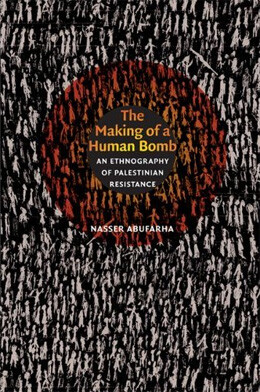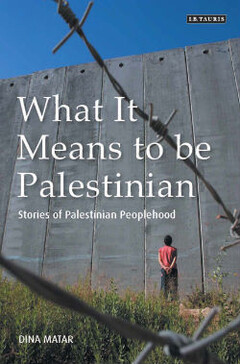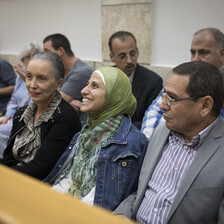The Electronic Intifada 13 October 2009

Abufarha traces the development of the concept of self-sacrifice in Palestinian society from the 1960s to the first Palestinian intifada (1987-1992). During the 1960s, Palestinian resistance fighters were known as the fedayeen or those who sacrifice for a cause. Contrary to common portrayal in the Western media, anyone fallen in the course of resistance to the Israeli occupation is honored in Palestinian society as a shahid, or a martyr, whether armed guerrilla or unarmed protestor.
Following the signing of the Oslo accords in the mid-1990s, the bombings by Hamas and Islamic Jihad were not supported by the majority of Palestinians, who mostly still hoped the “peace process” would lead to a Palestinian state. The two Islamic groups had to actively recruit for such operations.
By the outbreak of the second Palestinian intifada in 2000, the stone-throwing children of the first intifada had grown up. Having watching their friends fall as martyrs to Israeli brutality, volunteers began to offer themselves to the armed factions: if they were to be killed anyway, it was surely better to choose the manner of their death. In the words of one of Abufarha’s interview subjects: “we are all martyrs with execution on hold.” The new concept of istishhad arose: actively seeking martyrdom as an act of resistance.
During the first three weeks of the second intifada, when popular demonstrations had been in full flow, Israeli army records state that its forces fired a million bullets — before the first Palestinian bombing. By November, Palestinian armed factions began to strike back. The more brutal Israeli repression got, the more the intifada militarized in response.
Abufarha says the aim of Palestinian martyrdom bombings was to cause “mimetic terror and fear” in Israeli society. He explains that the long years of Israeli terrorism in the West Bank and Gaza began, finally, to be mimicked by the victim.
Abufarha does not focus on international law or the morality of armed resistance. As an anthropologist, he instead studies cultural meaning and perception. He argues that martyrdom operations were primarily a “cultural performance” and that they “cannot be entirely understood without expanding the analysis to social and cultural realms.” He argues that “we have to give equal attention to victims and perpetrators” of violence.
Abufarha emphasizes that suicide attacks are not perpetrated by mad bombers but are a product of the violent environment of the Israeli occupation, arguing that they are an example of “how violence may become a logical, meaningful and intelligible practice.” Moreover, Abufarha makes a compelling case that the notion of the martyr’s life after death is mostly not religious in nature. He offers evidence that more emphasis tends to be put on the secular notion of living on in memory and reputation. This “explains why both Islamic and secular groups organize martyrdom operations.” He cites examples from popular Palestinian demonstration slogans, graffiti, literature and art in which a shahid is considered to have made a willing sacrifice to the land of Palestine itself. He or she will thus live on in the cultural memory of the people.
It is undeniable that the wave of Palestinian bombings against both Israeli military and civilian targets during the second intifada developed a certain degree of support among the Palestinian population. As Abufarha explains, after Palestinian hopes for international support for their unarmed popular uprising came to nothing during the first intifada, “no longer did the Palestinians rely on the international community as a supporter that would be swayed” during the second intifada. Indeed, during the bloodiest days of the second intifada the armed wings had more volunteers than they knew what to do with. “We started to tell people to look after their kids,” recounts Kamal, a local leader of the al-Aqsa Brigades in Jenin. This counters conventional wisdom claiming suicide bombers are coerced into the attacks.
Abufarha does not take a moral position either for or against suicide bombings. He calls them both “legitimate” and “illegitimate” in different contexts, depending on which population is perceiving them. At times, he is in danger of cultural relativism, as such dichotomies ignore Palestinian arguments against attacks on Israeli civilians. However, he does note the illegality of targeting civilians under international law. Abufarha concludes the book with the assessment that martyrdom operations did not defeat the occupation, but they did prevent Israel from “settling the conflict on its own terms” (i.e., incorporating the occupied territories, without Palestinians, into Israel).
The Making of a Human Bomb does have some shortcomings. There are several minor errors that closer editing should have identified, such as references in the text to books missing from the bibliography. There are also minor factual errors. For example, Abufarha claims that the Democratic Front for the Liberation of Palestine (DFLP) was one of the Palestinian groups “engaged in organizing martyrdom missions” during the second intifada. However, unlike the Popular Front for the Liberation of Palestine (PFLP), the DFLP has never performed a suicide bombing, and is not on the State Department’s list of US Government Designated Foreign Terrorist Organizations. Abufarha could have been referring to a handful of DFLP “no escape” attacks against Israeli military targets, but this should have been clarified in the text. Moreover, as an ethnography published by an academic press, it is not necessarily written for a general readership and the narrative suffers at times from excessive jargon.
Abufarha’s focus on cultural perception sometimes leads to a neglect of history and facts. For example, he does not give an account of the outbreak of the second intifada, so it may not be clear to some readers that, until the first Palestinian bombing on 2 November 2000, the first month of the intifada had been mostly unarmed on the Palestinian side (fully armed on the Israeli side, of course). For those unfamiliar with the chronology of events, the book should be read alongside another work, for example Tanya Reinhart’s Israel/Palestine: How to End the War of 1948. It also could have benefited from a wider account of the tactical and strategic goals of suicide bombings. However, these factors are addressed in other studies that Abufarha critiques, such as Robert Pape’s Dying to Win and Mia Bloom’s Dying to Kill.
One could be forgiven for wishing that the book had focused on critical reassessment of suicide bombings as a well as a greater discussion of cause and effect. In addition, a mention of Hamas’s various offers (rejected by Israel) of a moratorium on targeting civilians, would also have been instructive. Ultimately, however, this is not a general history of Palestinian resistance. It is certainly an important contribution to the understanding of this bloody chapter in the history of Palestinian resistance, as it addresses the issue from the perspective of the Palestinians themselves. As the author concludes, understanding this perspective is vital if we are to “develop an effective response to violence.”
Asa Winstanley is a freelance journalist who has lived in and reported from occupied Ramallah, working for the Palestine Times and the Jerusalem Media and Communications Centre. His website is www.winstanleys.org.
Related Links
- Purchase The Making of a Human Bomb on Amazon.com





